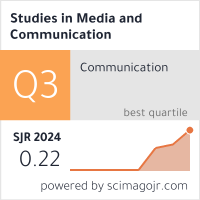The Analysis of World Information Warfare and Information Security in the Context of the Russian-Ukrainian War
Abstract
The appearance of significant transnational information processes has given rise to new threats to international security, such as information warfare. The problem of employing information warfare, which has become particularly acute and relevant, can be observed through the example of the full-scale war between the Russian Federation and Ukraine. Numerous information attacks by the aggressor country in the form of fake news dissemination confirm this. The latter requires in-depth study for the development of countermeasures, the application of combat algorithms, and the organization of modern information security.
This article aims to introduce a methodology of information security based on several advanced defensive administrative measures, including a review of a series of response cycles to information attacks, mainly when conducted through hybrid and information technologies in the context of the Russian-Ukrainian war. Given the rapid dynamics of contemporary information processes and associated information threats, a complex set of countermeasures is necessary enabling an effective response to threats and timely prediction.
The research methodology is based on general scientific and empirical methods of analysis and scientific cognition, including observation, systemic analysis, classification, scientific abstraction, statistical analysis, analogy, graphical generalization, and systematization. According to the results of the conducted research, it has been established that the distribution of managerial decisions into "fast" and "slow" allows for combining response to attacks with information accumulation to identify the most vulnerable elements and predict future information warfare. In particular, a process of responding to information attacks consisting of several stages of administrative measures has been proposed. Attention is given to the need to consider the initial data for further use in each relevant war period when repeating the cycle following the completion of the specified four-step countermeasure algorithm. Additionally, it has been identified that transmitting data on unlawful aggressor attacks to the information collection system requires careful planning and coordination among various operations and structures. The authors have substantiated and proposed the necessity and application of coordinated administrative measures among information security entities.
Full Text:
PDFDOI: https://doi.org/10.11114/smc.v11i7.6414
Refbacks
- There are currently no refbacks.
Studies in Media and Communication ISSN 2325-8071 (Print) ISSN 2325-808X (Online)
Copyright © Redfame Publishing Inc.
To make sure that you can receive messages from us, please add the 'redfame.com' domain to your e-mail 'safe list'. If you do not receive e-mail in your 'inbox', check your 'bulk mail' or 'junk mail' folders.
If you have any questions, please contact: smc@redfame.com
------------------------------------------------------------------------------------------------------------------------------------------------------

